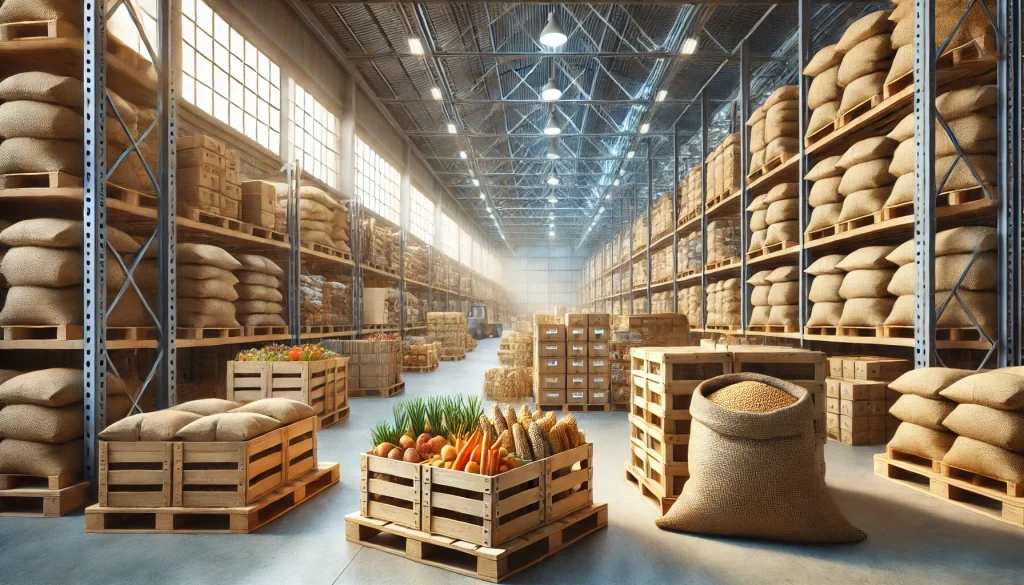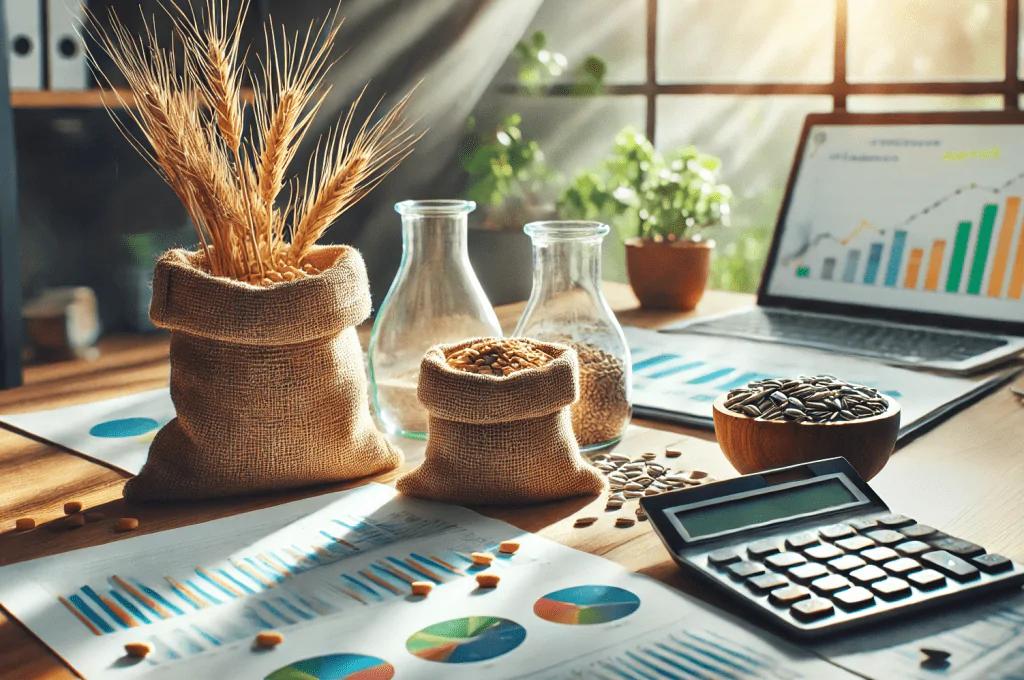Product cost is one of the most important economic indicators that reflects the efficiency of an enterprise and affects its profitability. Pricing, production profitability, and product market competitiveness depend on its accurate calculation. In this article, we will examine in detail what product cost is, how to calculate it, and what types exist.
What is Product Cost

Product cost is the sum of all enterprise expenses related to the production and sale of a specific type of product. It shows how much it costs the enterprise to manufacture a unit of product and includes the cost of raw materials, materials, fuel, energy, employee wages, social contributions, depreciation of fixed assets, and other direct and indirect expenses essential for the production process.
Simply put, cost is the price a company pays to create its product. That’s why this indicator is key when analyzing business efficiency. The lower the base price, the more profit the company makes from each unit of production.
Product cost calculation is based on accounting data about production expenses. This process is called costing, and its result is a calculation – a document that shows the composition of expenses and their distribution among different types of products.
Read also: Product profitability: what it is and how to calculate the indicator
How to Calculate Product Cost
Before we look at the methodology for calculating product cost, let’s clarify why it needs to be done.
Why Calculate Product Cost
Regular analysis of product cost indicators allows:
- planning production and sales volumes;
- determining optimal product price;
- evaluating profitability of individual product types;
- controlling and optimizing expenses;
- making informed management decisions about business development.
So calculation is not just an accounting procedure, but an important enterprise management tool.

What Expenses are Included in Cost Calculation
For correct determination of product cost indicators, all expenses related to its production and sale must be considered. They can be divided into several groups:
- Direct material costs – the cost of raw materials, materials, semi-finished products, components that are directly used in product manufacturing and can be directly attributed to its cost.
- Direct labor costs – wages of workers directly involved in production, including contributions (UST).
- Other direct costs – those that can be directly attributed to the base price of a specific product type (for example, depreciation of production equipment used to manufacture this particular product).
- General production costs – indirect costs related to production organization and management (for example, workshop management personnel wages, depreciation and maintenance of workshop buildings, labor protection costs, transportation costs, etc.).
General production costs are further divided into:
- variable general production costs – those that change in direct proportion to production volume changes (for example, technological energy and fuel expenses);
- fixed general production costs – those that remain unchanged (or almost unchanged) when production volume changes (for example, heating and lighting costs of workshop premises).
Read also: Business Plan in Agriculture: What It Is and How to Create One
Product Cost: Formula
Formula for unit product cost:
C = Z / X
where:
- C – product cost indicator per unit;
- Z – total expenses for obtaining and selling the product per period;
- X – number of units produced per period.
Using this product cost formula, let’s determine the base price with a specific example.
Product Cost Calculation: Example
Suppose a farm grows wheat on 500 hectares. During the season, the enterprise incurred the following expenses:
- seeds, fertilizers, fuel – 1,500,000 UAH;
- labor costs with contributions – 700,000 UAH;
- agricultural machinery depreciation – 300,000 UAH;
- land share lease – 1,000,000 UAH;
- other direct costs – 200,000 UAH;
- general production expenses – 500,000 UAH.
The gross wheat harvest was 2,500 tons.
Therefore, the product cost is:
C = (1500000 + 700000 + 300000 + 1000000 + 200000 + 500000) / 2500 = 1680 UAH.
In this product cost calculation example, we determined that the enterprise spent an average of 1,680 UAH to produce 1 ton of wheat. This information allows farm management to evaluate business efficiency, determine optimal selling price, and plan cost reduction measures.
Our online service WEAGRO provides farmers with the opportunity to purchase necessary goods and services for their activities in installments without additional expenses. This allows farmers to manage working capital more effectively, without diverting it from the production process, and as a result, optimize the base price. After all, timely provision of quality seeds, fertilizers, fuel, and plant protection products to agricultural enterprises directly affects yield, gross harvest, and consequently – the cost of crop production.
Types of Product Cost
In the costing process, different types of product costs are used, each having its own purpose and calculation methodology.
Production Cost
Includes direct material, direct labor, other direct, and distributed general production expenses. This type reflects the enterprise’s expenses directly in product creation.
Cost of Sold Products
Consists of the production cost of goods sold during the reporting period, undistributed fixed general production costs, and excess production expenses. In essence, these are the enterprise’s expenses for products that have found their buyer and generate income.
Planned
Calculated based on progressive norms for material, labor, energy resources, etc. expenses. Used for planned calculations and determining planned price.
Standard
Also calculated based on expense norms, but these are current ones, regularly reviewed and adjusted considering actual production conditions. Used for operational cost control and identifying deviations from norms.
Actual (Reported)
Actual product cost reflects the real enterprise expenses for product production and sale in the reporting period. Determined based on accounting data and serves as a basis for analyzing enterprise efficiency.
Provisional
Approximate cost calculated based on actual expenses from past periods, considering expected changes in production conditions. Used for determining selling prices for new products when exact data about actual expenses is not yet available.
Estimated
Calculated from estimates (calculations) of expenses for producing individual items or performing a certain volume of work. Applied in individual and small-series production, as well as in fulfilling one-time orders.
Technological
Includes only expenses directly related to the technological process of product manufacturing (raw materials, materials, technological energy, production workers’ wages). Used for analyzing production technology efficiency and finding cost reduction reserves.
Workshop
Consists of technological cost and expenses for machinery and equipment maintenance and operation. Reflects expenses of a separate production unit (workshop) and serves for controlling and planning its work.
Production Cost of Marketable Products
Includes production cost of finished products intended for external sale, and base price of services and industrial work for other enterprises and organizations.
Full Cost
Consists of production cost, administrative expenses, sales costs, and other operational expenses. Reflects all enterprise indicators related to production and sales, and is used for determining financial results of activities.
Each enterprise chooses the essence and types of product costs that best suit its specific activities and management needs. The main thing is to ensure a unified calculation methodology and correct expense reflection according to accounting standards.
Ways to Reduce Product Cost
Achieving minimum base price is a complex task requiring efforts from all enterprise departments. The main ways to reduce product cost are:
- Improving technical production level through implementing new, more productive equipment, automation, mechanization of production processes, using progressive technologies and materials.
- Improving production and labor organization through optimizing production structure, specialization and cooperation, reducing production cycle duration, implementing scientific labor organization, rational use of working time.
- Increasing production volume, leading to reduction of conditional-fixed expenses per product unit (scale effect). However, it’s important to ensure corresponding product demand and prevent overstocking.
- Reducing product material consumption through rational use of raw materials and materials, implementing resource-saving technologies, replacing expensive materials with cheaper ones without quality loss, using production waste.
- Improving product quality, allowing sales at higher prices, reducing defect correction expenses.
- Reducing administrative and sales expenses through improving management system, automating document flow, optimizing sales channels, reducing transport and advertising costs.
- Using secondary resources and production waste, allowing additional product production with minimal expenses, reducing waste disposal costs.
- Reducing energy resource expenses through implementing energy-saving technologies, using alternative energy sources, optimizing energy consumption, reducing network energy losses.
- Optimizing logistics processes, including choosing optimal raw material supply channels, finished product sales, reducing transport costs, reducing warehousing and inventory storage expenses.
Read also: Energy-Saving and Resource-Saving Technologies in Agriculture
Of course, not all these directions are equally relevant for every enterprise. The choice of priority product cost indicators depends on industry specifics, production scale, financial capabilities, and other factors. But in any case, work on cost reduction must be systematic, consistent, and based on deep analysis of cost structure and influencing factors.
One tool for such analysis is factor analysis of deviations between actual product cost and planned or base cost. It allows determining which factors (changes in production volume, resource prices, expense norms, etc.) caused the deviation, and evaluating each factor’s impact. Factor analysis results are used for adjusting plans, standards, making management decisions about cost reduction.
Reducing product cost is a complex task requiring a systematic approach, deep expense analysis, application of modern management methods, and involvement of all enterprise departments. Its successful solution allows increasing competitiveness, increasing profit, ensuring sustainable business development.
Conclusion
Product cost is a key production efficiency indicator. Its calculation is necessary for planning, pricing, cost control. Understanding cost structure and additional influencing factors allows making informed management decisions, increasing business profitability.
Our online service WEAGRO provides suppliers with the opportunity to increase sales volumes, attract new clients, increase farmer loyalty through selling goods and services with deferred payment. The supplier receives payment immediately, while WEAGRO takes all risks.









